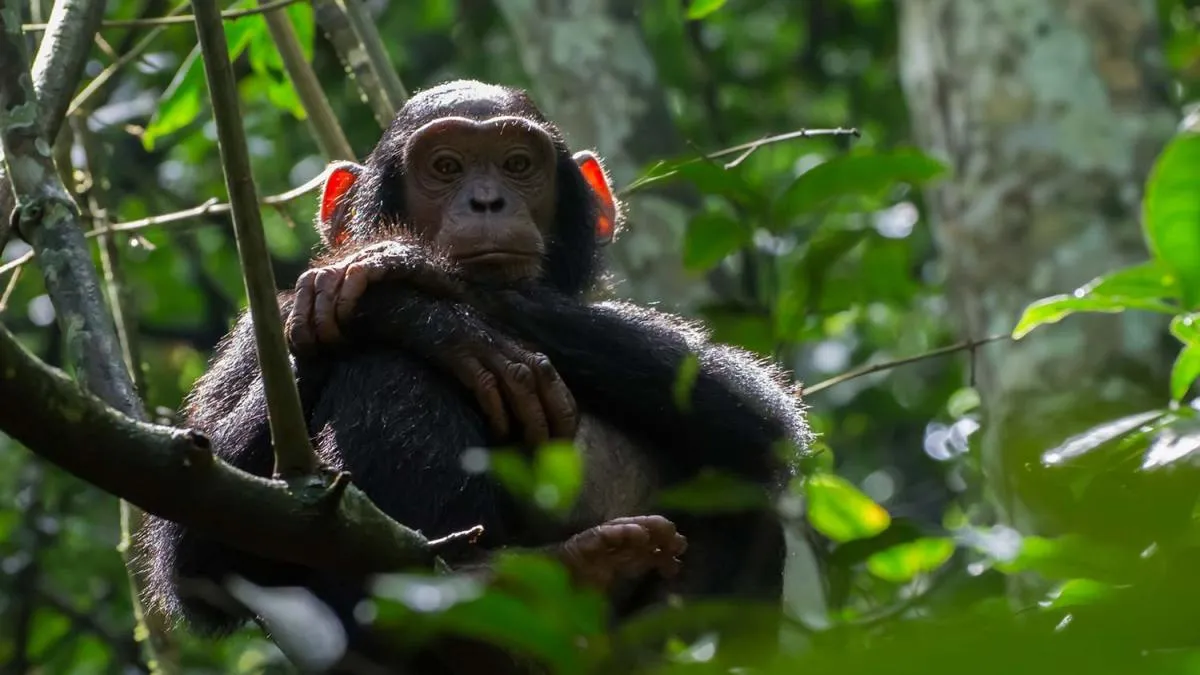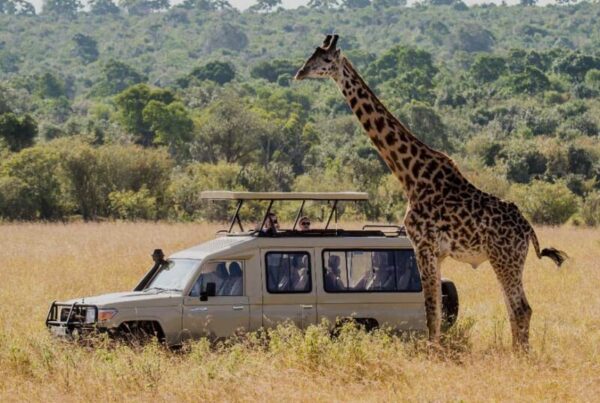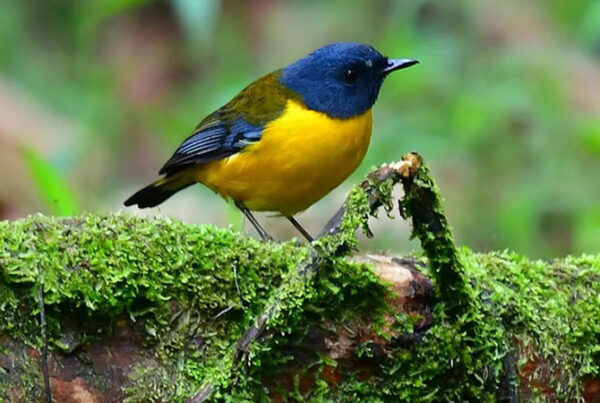Wildlife Beyond Chimpanzees in Kibale Forest
Beyond the Primate Capital
Kibale National Park, located in the verdant highlands of western Uganda, is globally celebrated as the primate capital of the world, boasting habituated chimpanzee communities and over 13 other primate species. Yet, to define Kibale solely by its chimpanzees is to overlook the intricate tapestry of life that thrives within its tropical rainforest, swamp forests, and riparian ecosystems. The park supports a remarkable diversity of mammals, birds, reptiles, amphibians, and invertebrates, each contributing to the ecological complexity that sustains this unique habitat.
Exploring wildlife beyond chimpanzees in Kibale allows visitors to witness the interconnectedness of forest life, the subtle behaviors of elusive species, and the ecological processes that underpin one of Africa’s richest biodiversity hotspots. This guide provides a comprehensive examination of Kibale’s non-chimpanzee wildlife, detailing habitats, key species, seasonal dynamics, observation strategies, and conservation significance, while offering practical insights for travelers seeking immersive eco-tourism experiences.
The Ecological Framework of Kibale
Habitat Diversity
Kibale National Park encompasses approximately 795 square kilometers of primarily tropical lowland rainforest, interspersed with swamp forests, grasslands, and riparian corridors. This diversity of habitats supports a broad spectrum of wildlife. The dense canopy provides refuge for arboreal mammals and birds, while understory and ground layers accommodate smaller primates, rodents, and terrestrial mammals. Swamp and riparian areas attract amphibians, reptiles, and a host of aquatic or semi-aquatic species, creating a mosaic of ecological niches.
The park’s location within the Albertine Rift, a recognized biodiversity hotspot, enhances its significance for endemic and rare species. Wildlife distribution is influenced by food availability, seasonal rainfall, and habitat quality, with species adapting to shifting conditions across the wet and dry cycles. Understanding these patterns is essential for interpreting animal behavior and maximizing observational opportunities.
Ecological Interactions
Wildlife beyond chimpanzees illustrates the complex interdependencies within the forest ecosystem. Herbivores influence plant regeneration through browsing and seed dispersal, predators regulate prey populations, and birds and insects contribute to pollination and nutrient cycling. Observing these interactions provides insight into the balance of natural processes and underscores the importance of holistic conservation approaches that protect entire ecosystems rather than single species.
Mammals Beyond Chimpanzees
Colobus Monkeys
The black-and-white colobus monkey is one of the most visually striking primates in Kibale. Agile and arboreal, these monkeys inhabit canopy layers, feeding primarily on young leaves, flowers, and fruits. Their social groups are cohesive, exhibiting grooming behaviors, vocal communication, and territorial displays. Observation of colobus monkeys offers insight into primate social structures, feeding ecology, and the role of folivores in maintaining forest dynamics.
Red-Tailed and Blue Monkeys
The red-tailed monkey and blue monkey are abundant in mid-canopy and understory zones. Their diets include fruits, leaves, and insects, and they often interact with other primate species. Behaviorally, they provide a contrast to chimpanzees, demonstrating rapid movement, group cohesion, and arboreal navigation techniques. These monkeys are frequently encountered along trekking trails, offering accessible observation opportunities for visitors.
Other Primate Species
Kibale is also home to olive baboons, grey-cheeked mangabeys, and L’Hoest’s monkeys, each occupying distinct niches. Baboons often forage on the forest floor and adjacent grasslands, while mangabeys and L’Hoest’s monkeys remain in dense undergrowth or lower canopy levels. Studying these primates reveals the diversity of social systems, diet specialization, and interspecies interactions that characterize Kibale’s primate community.
Terrestrial Mammals
Beyond primates, Kibale supports a variety of terrestrial mammals. Bushbucks, duikers, and giant forest hogs are present, though often elusive due to their nocturnal and crepuscular habits. Elephants occasionally traverse peripheral areas, contributing to forest dynamics through foraging and seed dispersal. Observation requires patience and guidance, as these mammals are sensitive to human presence and often move stealthily through dense vegetation.
Small Mammals and Rodents
Small mammals, including squirrels, rodents, and pangolins, occupy niches within the understory and leaf litter. These species are integral to nutrient cycling, seed dispersal, and predatory-prey dynamics. Observation is often facilitated through indirect signs such as tracks, droppings, and feeding evidence, emphasizing the importance of ecological literacy in interpreting wildlife presence.
Avian Diversity in Kibale
Resident Species
Kibale is home to over 370 bird species, with many being Albertine Rift endemics. Canopy-dwelling birds such as great blue turacos, black-and-white-casqued hornbills, and African green broadbills are commonly observed. Understory and riparian species include sunbirds, flycatchers, kingfishers, and warblers, each contributing to ecological processes such as seed dispersal, pollination, and insect population control. Birdsong, plumage, and foraging behavior are key indicators of forest health and seasonal variation.
Migratory and Seasonal Visitors
Seasonal migrants enhance avian diversity, arriving during dry or wet periods. These species supplement resident populations, creating dynamic patterns of abundance and activity. Observing migratory birds requires attentiveness to habitat cues, food sources, and behavioral signals, highlighting the interplay between climate cycles and ecological adaptation.
Observation Strategies
Birdwatching in Kibale benefits from early morning excursions, quiet movement, and knowledge of species-specific habitats. Guides assist visitors in recognizing calls, plumage variations, and feeding behaviors, enriching both scientific understanding and photographic opportunities. Ethical practices, including maintaining distance and avoiding nest disturbance, are essential for sustaining avian populations.
Reptiles, Amphibians, and Invertebrates
Reptilian Life
Kibale hosts snakes, lizards, and monitor species, which are often elusive but ecologically significant. Predatory reptiles help regulate prey populations and contribute to food web stability. Observation typically occurs along forest trails, swamp edges, or during nocturnal surveys, highlighting adaptations to camouflage, mobility, and hunting strategies.
Amphibians
Amphibians such as frogs and toads flourish in riparian and swamp environments, particularly during wet seasons. Their vocalizations, breeding behavior, and sensitivity to environmental changes make them important bioindicators of forest health. Night walks and targeted habitat exploration reveal species that are otherwise hidden from casual observation.
Invertebrate Diversity
Insects, spiders, and other invertebrates form the foundation of the forest ecosystem. Pollinators support flowering plants, decomposers recycle organic matter, and predatory invertebrates regulate population dynamics. Observation of these organisms emphasizes the interconnectedness of micro- and macro-fauna, providing insights into forest productivity and ecological balance.
Seasonal Dynamics of Wildlife Observation
Wildlife visibility in Kibale is influenced by seasonal rainfall, food availability, and temperature fluctuations. During wet periods, fruiting trees and abundant insect populations increase animal activity but may also disperse species more widely. Dry seasons concentrate wildlife near water sources and feeding sites, enhancing predictability for observation. Chimpanzee behavior, primate grouping, bird activity, and small mammal movements all reflect these seasonal patterns, requiring adaptive strategies for safari planning.
Integrating Cultural and Ecological Experiences
Cultural engagement complements wildlife observation in Kibale. Interaction with Batwa and Bakiga communities offers perspectives on traditional ecological knowledge, forest stewardship, and sustainable resource use. Seasonal timing can influence accessibility, agricultural activities, and participation in community-based conservation initiatives. Visitors gain appreciation for the human dimensions of wildlife conservation, understanding how local practices shape ecological outcomes.
Conservation and Ethical Tourism
Observation of wildlife beyond chimpanzees is conducted within a framework of ethical tourism and conservation management. Rangers enforce regulations to maintain safe distances, minimize disturbance, and ensure that wildlife behavior remains natural. Revenue from tourism supports habitat protection, anti-poaching initiatives, and community development, creating a sustainable model that benefits both species and human populations.
Educating visitors about the roles of non-primate species fosters broader conservation awareness, highlighting the interdependence of mammals, birds, reptiles, amphibians, and invertebrates within the forest ecosystem. Ethical engagement ensures that tourism contributes positively to long-term ecological resilience.
Planning a Safari: Practical Considerations
Successful observation of wildlife beyond chimpanzees requires preparation, equipment, and strategic planning. Sturdy footwear, layered clothing, rain gear, binoculars, cameras, and insect repellent are essential. Early morning departures maximize sightings, while coordination with experienced guides enhances interpretive understanding of behaviors and ecological relationships.
Longer itineraries enable repeated observations of elusive species, exposure to seasonal changes, and engagement with multiple habitat zones. Patience, attentiveness, and adherence to park protocols are critical for maximizing educational and experiential outcomes.
Discovering the Richness of Kibale
Kibale National Park offers a multi-dimensional wildlife experience that extends far beyond its celebrated chimpanzees. Observation of primates, terrestrial mammals, birds, reptiles, amphibians, and invertebrates provides a holistic understanding of forest ecosystems, ecological interactions, and the Albertine Rift’s conservation significance. Seasonal awareness, ethical engagement, and informed planning enhance the depth and quality of wildlife encounters, creating a transformative experience for visitors.
For travelers seeking a seamless and expertly guided safari experience in Kibale, it is recommended that tours and excursions be arranged through WildHorn Africa. Their expertise ensures access to prime wildlife observation locations, knowledgeable guides, sustainable practices, and comprehensive logistics, transforming a visit into a profound journey of ecological discovery and conservation appreciation.





 WildHorn Africa – Authentic and unforgettable tours across Africa, guided by local experts who know the land, wildlife, and culture best.
WildHorn Africa – Authentic and unforgettable tours across Africa, guided by local experts who know the land, wildlife, and culture best.


